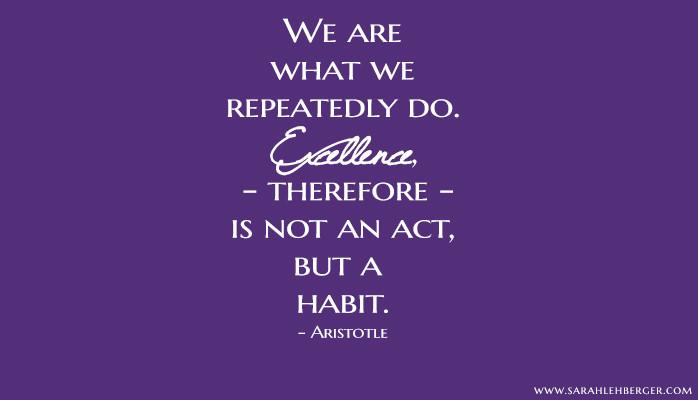
Write something
🚩The 5 to 1 Rule: Psychological Math You Need for Healthy Relationships (Negativity bias and Loss Aversion)
Our brains are not neutral...ever wonder why one negative comment can derail your whole day while getting positive feedback barely does anything? Why it can be difficult to try new things? Why losing $20 feels worse than winning $20? Why breaking a stream feels more painful than maintaining it feels joyful? This is the brain running on 2 psychological pathways that happen automatically: The negativity bias and loss aversion. Negativity bias means your brain gives negative stimuli preferential treatment. The amygdala fires more rapidly and intensely when it detects anything potentially threatening or painful. Positive events register, but they simply do not activate the same level of neural intensity. So negative experiences feel more intense. Then, loss aversion doubles down. From a cognitive standpoint, losses are viewed as more significant than gains. The psychological “cost” of losing tends to outweigh the psychological “benefit” of gaining, even when the events are equal in size. Your brain would rather avoid the pain of losing than pursue the pleasure of winning. This means negative experiences have more gravitational pull in your mind. Let's translate this to relationships. The Gottman's (gurus on relationships who have tons of research on this) give us the example: In close relationships, you need roughly five positive interactions for every one negative to maintain stability. This ratio is not arbitrary. It counterbalances the heavier cognitive and emotional weight that negative interactions carry. A single critical comment activates both biases, so the positives must come in higher volume to keep the system regulated. 5:1!! That's some weight! But, having a ratio like this, tells us that we CAND do something about it: these biases may be automatic, BUT we can work with counteracting them a bit. We can strengthen prefrontal cortex regulation through intentional activities such as savoring, recognition of micro-moments of connection, naming strengths, repair attempts, and cognitive reframing. Basically being on the lookout for the good.
Poll
14 members have voted
Learning is Hard. Staying Stuck is Harder. (Growth vs. Fixed Mindset)
I'm going to be just a little sassy for a quick second...I'm mainly speaking to myself here, but if this hits home for any of you, maybe that's okay too. "Stop shrinking to fit yesterday's version of you". One of the things that I really struggle with hearing is the phrase "This is just who I am".. Is it who we are or is it the habits that we've built over time that 'feel' ingrained? We often tie identity to the things to which we've habituated but does the need to then become our identity? Maybe, maybe not. (Also, a side note---I think that this month, more than any other months in the past, I've been challenged to really embrace challenges--this has been through conversations, through readings, through random IG reels (I guess that's not so random), through too many mediums to really ignore as mere coincidences. It's a call to action. If we don't embrace challenges willingly, challenges will find us and then the question will be: Are we in a place where we've built the warrior within to be able to handle it? ) A nod to @John D @John Kennedy @Dan 'Remmy' Stourac @LaTanya Carter @Ruth aka Grace Rose @Dr. Melissa Partaka @Steve Webb and Jesus who I can't tag (and to each one of you that have shared the challenges that you're taking on and your perseverance!!). One of the strongest findings in psychology is that our beliefs about ability influence how we behave, how we handle tough situations and also how we deal with setbacks. Carol Dweck (a short video below) has done research on the difference between how people handle situations. A fixed mindset sees abilities as static. A growth mindset sees abilities as skills that can change with effort, strategy, and support. The difference sounds simple, but it shifts everything about how we respond to challenge.
Your Higher Self Has a Better Seat-Go Sit There (The Balcony View)
The Balcony View-Gaining Perspective Without Disconnecting The "balcony view" is a psychological skill that often gets overlooked and is underutilized IMHO, yet it can change the entire tone of how we respond to stress and heightened emotion situations. Instead of getting swept up in the heat of the moment, this is an opportunity to mentally step up to a higher perspective and look at the situation like you are watching it unfold from above. This creates just enough distance to think more clearly. Nerd Alert (some science behind it): The balcony view works because it activates metacognition (awareness of our own thoughts/thinking) and recruits areas of the prefrontal cortex that support reflection, emotional regulation, and decision making. The ventromedial prefrontal cortex calms the fear (fight/flight/freeze/fawn ) response. The anterior cingulate cortex helps shift attention so you can see the bigger picture instead of fixating on the trigger. This is very different from dissociation. Dissociation pulls you into fog and detachment. The balcony view pulls you into clarity and a level of control/intentionality. It's a strategic shift so that emotions are there to inform but not to be in the driver's seat. It's a way to increase emotional intelligence and when engaged it has the potential to diffuse heightened situations. How to do it: To practice it, take a deep breath and pause before reacting Imagine yourself taking a few mental steps upward (as if climbing to get the balcony view of a play) and then watch the scene as if it were happening on a stage. Notice the facts, the emotions, and the choices available. No judgment--if there are judgments, notice them as such. The point of this is to just observe the situation and gather information. The more you use it, the easier it becomes to respond with clarity instead of impulse. (and a resource on processing emotions :) ). What are your strategies for making space for and honoring your emotions but not letting them rule in a conflict?
🌿Cortisol is expensive. Forgiveness is free and the ultimate power move
Want to be free of old hurts? Give. forgiveness a try. Maybe you're not quite at that point, but maybe, just maybe, it's worth leaning into...just a little bit? You owe it to yourself and it is an act of self respect... Forgiveness gets talked about like it is some soft, floaty abtract idea, but psychologically it is a form of emotional agency..Freedom.. At its core, forgiveness is the process of releasing the emotional charge around a hurt so it stops taking up space in your mind and body. It does not mean forgetting, excusing or reconciling and it is not a free pass for bad behavior. Let's look at those statements again..."Forgiveness DOES NOT mean forgetting, excusing, or reconciling. It is NOT a free pass for bad behavior." Sometimes we worry that that's what forgiveness will do--that it will leave us vulnerable/open to being hurt again. That somehow acceptance of what has happened means that it they get a free pass... It is NOT that. A lil friendly reminder: forgiveness is for the person who carries the wound/hurt, not the one who created it (though, it can absolutely carry a ripple effect for the person that has done the offense and this can be kind of cool too!). You are the one living with the stress response, the rumination and the emotional hangover. Letting go is about clearing your nervous system and taking back energy that has been stuck in a ruminative cycle. It's living more empowered rather than enslaved to an emotion... I'll say it again--freedom. What Forgiveness Does for You 1. Reduces emotional load: Anger, resentment and rumination activate the stress system as if the wound is still happening. Forgiveness helps settle the nervous system and brings mental clarity. That's kinda cool, eh? 2. Restores agency: By choosing to forgive, you stop waiting for the other person to repair what they broke. You get to regain control of your narrative and your emotional energy. Don't fool yourself, emotional energy absolutely carries weight and can get heaaavy.
💛 Relating to Others Without Losing Your Drive for Excellence
🔥 RELATING TO OTHERS IS NOT YOUR EXCUSE TO STAY SMALL (post inspired by a recent conversation with @Steve Webb in his group! Also @Dr. Melissa Partaka had a recent podcast with someone that touched on changing course and not needing to be stuck ) It feels powerful to be understood. Co-regulation, empathy and validation help calm the nervous system and reduce emotional overload. But...let’s be honest for a second...Too many people stop there. They feel seen, they feel validated, and then they camp out in the same place that has been holding them back.Compassion helps you stabilize, but stability is fuel for forward motion, not an excuse to stay comfortable. Just because compassion brings comfort doesn'tmean that we need to lay in that bed. Some science because why not nerd it out a little bit? Empathy reduces shame activation, which is important because shame triggers the threat system and suppresses prefrontal cortex functioning. When that part of the brain goes offline, motivation, planning and healthy decision making become harder. It's more likely to keep us stuck. This is why shame rarely produces real change. Here's the thing though, compassion is not the finish line and validation does not need to equal resignation. It is the starting line.Validation gets you out of fight or freeze, but what you do next is on you and this matters. ✨ Striving for Excellence Excellence is about alignment with values and taking consistent action towards them. It involves using strengths/skills/abilities and practicing intentionality and taking actions that support long term wellbeing. It's a daily choice to rise even when it hurts--this is resilience in motion and ownership. Grit, if you wanna call it that. You can offer yourself compassion for where you are while STILL directing yourself toward growth. You can hold both truths:“I understand why I feel this way” and “I am capable of choosing something healthier.”
Poll
11 members have voted

1-23 of 23
powered by

skool.com/inspired-life-empowered-being-7894
Supportive environment where we are encouraged to increase our awareness, take action, and thrive through life's many challenges. Inspire.Empower.Live
Suggested communities
Powered by
